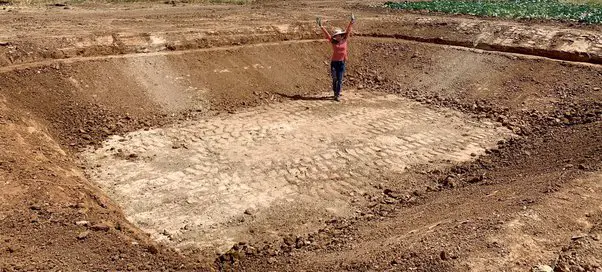Welcome to our comprehensive guide on how to build a tilapia fish pond. Tilapia is a popular choice for aquaculture due to its rapid growth, hardiness, and delicious taste. Building a fish pond for tilapia can be a rewarding and sustainable way to ensure a fresh supply of fish for personal consumption or commercial purposes. Follow our step-by-step instructions to create your own tilapia fish pond successfully.
1. Site Selection
Choose a suitable location for your tilapia fish pond. Select an area with access to a reliable water source and ample sunlight. Ensure the land is level and free from contaminants or pollutants that could harm the fish. Adequate space and proper drainage are essential considerations for the site selection.
2. Pond Design and Sizing
Design your fish pond layout based on the available space and desired capacity. Tilapia require a minimum of 250 gallons of water per pound of fish. Calculate the pond size based on the intended stocking density and water volume needed to support the fish population.
3. Pond Construction
Excavate the pond area to the desired depth and shape. Use a liner such as high-density polyethylene (HDPE) or bentonite clay to prevent water seepage. Install inlet and outlet pipes for water circulation and aeration. Consider adding a filtration system to maintain water quality.
4. Water Supply and Quality
Ensure a consistent supply of clean water for your tilapia fish pond. Test the water quality regularly for parameters such as pH, temperature, dissolved oxygen, and ammonia levels. Maintain proper water circulation and filtration to create a healthy environment for the fish.
5. Stocking and Feeding
Introduce tilapia fingerlings into the pond once the water quality is optimal. Monitor the stocking density to prevent overcrowding and stress among the fish. Feed the tilapia a balanced diet of commercial fish feed or organic matter such as duckweed and algae.
6. Maintenance and Care
Regularly inspect the pond for signs of disease, algae blooms, or water quality issues. Perform routine water changes and clean the filters to prevent nutrient buildup and oxygen depletion. Monitor the fish behavior and growth to ensure they are healthy and thriving.

Credit: www.fao.org
7. Harvesting and Processing
Harvest the tilapia once they reach the desired size for consumption. Use humane and efficient methods for harvesting to minimize stress on the fish. Process the fish immediately for freshness or freeze them for later consumption. Enjoy the fruits of your labor with delicious tilapia dishes!
8. Sustainability and Environmental Impact
Practice sustainable aquaculture techniques to minimize the environmental impact of your tilapia fish pond. Use organic and locally sourced feed to reduce carbon footprint. Implement water-saving measures and eco-friendly practices to conserve resources and protect the ecosystem.
9. Marketing and Sales
If you have a surplus of tilapia, consider selling them locally or at farmers’ markets. Promote your sustainably farmed fish to attract environmentally conscious consumers. Build a brand around your tilapia products and share your aquaculture journey with the community.

Credit: www.youtube.com
10. Conclusion
Building a tilapia fish pond requires careful planning, dedication, and a love for aquaculture. By following our guide, you can create a thriving ecosystem for tilapia and enjoy the benefits of fresh, sustainable fish farming. Start your tilapia fish pond project today and embark on a rewarding journey towards self-sufficiency and eco-conscious living.





